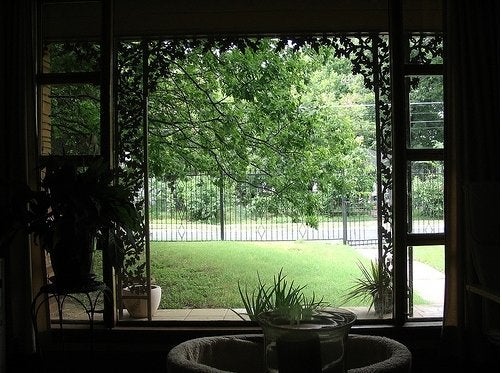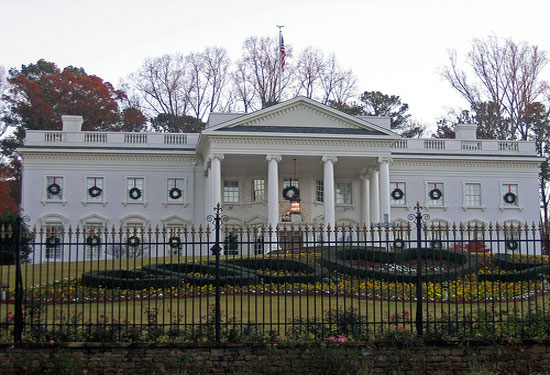
Nowadays, you can take a stroll through a suburban street and actually come across the White House. Well, not the actual residence of George W., but a scarily accurate, humongous replica. Yep, despite the woes of the housing market, Americans are still super-sizing their homes.

The funny thing is, while homes get bigger, and this McMansion trend swallows up neighborhoods and landmarks, families are actually getting smaller. According to the Census Bureau, the average house size has ballooned from 1,660 square feet in 1973 to 2,434 square feet in 2005. Meanwhile, only 10 percent (down from 21 percent) of households have five or more people. In 1970, the average number of people per household was 3.14. Now, it is 2.6. Lots more space per person...
These big homes mean extra resources, extra acres of land, and increased energy consumption...that would be one super-sized footprint. Clearly, big houses are not green.
But do they mean extra happiness? Not according to many of the experts. University of California-Riverside professor of psychology Sonja Lyubomirsky, the author of "The How of Happiness" says, "Someone who feels elated after upgrading to a big house is likely to soon start yearning for more -- an extra bedroom, a pool, whatever it may be. But ultimately, whether we drive a battered truck or a Lexus to work; whether we have hypertension or asthma, our ability to be happy and get happier doesn't vary much."
Seems like we can live with less, and be just as happy.
What is it with our obsession with super-sized homes? Comment Below!
More from Graham Hill on Huffington Post
::Why I Don't Flush
::Would You Kill What You Eat?
::Europeans Happier than Americans yet Half the Footprint
::Phones as Fashion: Can You Resist the New Apple iPhone?
More From Huffington Post on Waste
::Three Things I Could Live Without: The Bath Mat, the Paper Towel, and the Cocktail Napkin
::Top 10 Most Useless Items of Crapola
More From TreeHugger on McMansions
::"Green" McMansions Torched in Seattle
::Big Houses Are Not Green: America's McMansion Problem
::Colorado "Credit" System Shot at McMansion Plague
::Dumb Question Dept : "Why is New Housing so Big and Lousy?"
Photo: Wharman via Flickr.